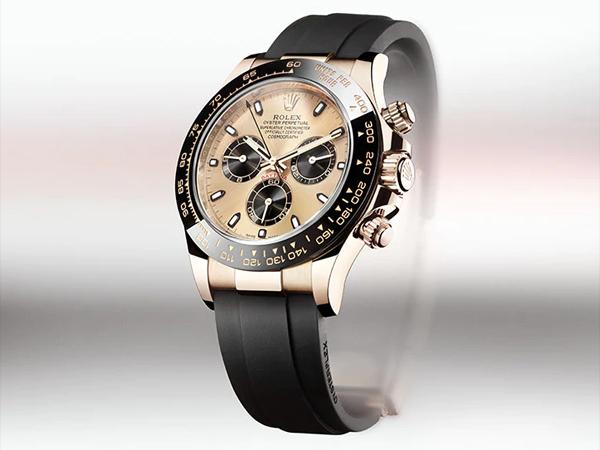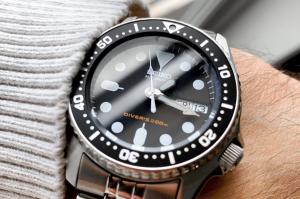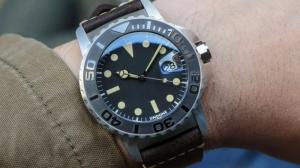A Complete Guide to Rolex Daytona Prices

The Rolex Daytona — or Rolex Cosmograph Daytona to be exact — prides itself as one of the most popular watches not only for the brand but also in the entire watchmaking industry. It’s not so surprising given the brand heritage of Rolex, as well as the many advantageous and luxurious bearings of this watch. Given that it’s also one of the brand’s flagship models, it’s no wonder to see how the Rolex Daytona prices skyrocketed through the years. To this day, we can only see it on an upward trend with no signs of holding back.
But what dictates the Rolex Daytona prices? To learn about the watch’s value, we must dig deep into its roots and learn its beginnings because after all, the Cosmograph Daytona is not just any other watch. It’s a legacy that lives right around your wrist.
Evolution of the Rolex Daytona
Contrary to what people might believe, chronographs aren’t exactly popular especially in the past, at least according to Rolex’s history. The brand produced chronographs yet they were nothing but shadows to three-hand watches that were at the hype in the past. Rolex began rolling out chronographs powered by third-party calibres. These watches are yet to employ the use of the popular Oyster case until the Second World War took place. Eventually, Rolex took the initiative to introduce chronograph to its now iconic Oyster case. However, despite the many features the chronograph watches offer, especially at the time, it still wasn’t a hit.
“Pre-Daytona” Chronographs: Rolex Ref. 6234 & Ref. 6238
The year was 1955 when Rolex launched the Ref. 6234 chronograph. At the time, this timepiece was yet to be labelled neither a Cosmograph nor a Daytona; therefore, its inscriptions don’t appear on the dial. Instead, the “Chronograph” is all everyone can see on its dial. There are about 2,000 of these watches made available until 1961 when the brand decided to discontinue the reference. At $200, the watch didn’t meet success.

The Rolex Ref. 6234 “Pre-Daytona” Chronograph comes in either a steel or gold 36mm case with a silver or black dial. It features a telemeter and tachymeter scale. On the dial, you’ll find applied dagger indexes, as well as leaf hands. The watch, however, doesn’t reach the utmost waterproofing capabilities of an Oyster because of its unthreaded or non-screwed-down pump pushers. Powering this timepiece is the Valjoux 72A hand-wound movement, which Rolex continued to use until the year 1988.

On the other hand, the Rolex Ref. 6238 “Pre-Daytona” Chronograph comes in either a steel case, a 14K gold case, or an 18K gold case. Just like its predecessor, it also comes in a 36mm case with a silver or black dial. But other iterations feature a dark grey dial instead or, in most rare cases, a blue and red multi-scale dial. With the Valjoux 72 movement, it’s not too different from Ref. 6234. One of the features to tell the watches apart is the baton hands on the Ref. 6238, as well as its applied hour markers and luminous hour plots.
Fast forward to today, you’ll find “Pre-Daytona” watches to be worth at least $20,000 to $30,000. It can get more expensive depending on the model and its rarity.
The Official Timekeeper for the Daytona Speedway

The beach at Daytona, Florida, was where the first automobile races in 1902 were held. It became a breeding ground for world records when it comes to speed, as the races went on through the years. One of its most successful racers is Sir Malcolm Campbell of Great Britain. The racecar driver was an avid fan of Rolex, having worn its watches in and out of the tracks in the 1930s. Rolex watches accompanied him when he set the world land speed record at the Daytona races in 1931. He personally thanked Rolex through a letter expressing his delight in the function and durability of the Oyster.
A new route was formed along the beach and oceanfront forming an oval. In 1959, the race ran smoothly on asphalt at the newly opened Daytona International Speedway.
A few years later, in 1962, Rolex became the official timekeeper at the Daytona Speedway. This happened a year before the brand launched the Cosmograph Ref. 6239. To strengthen the brand’s affiliation with the race, they nicknamed this watch the “Daytona”, one that stuck through the years even to this day. This timepiece was crafted around the sport, thus the tachymetric scale on the bezel. In effect, this makes the watch larger than other timepieces on the Rolex catalogue at the time at 36.5mm. For the first time, the word “Cosmograph” appears on the dial under the brand’s namesake and logo at 12 o’clock. However, while other dials feature the word “Daytona” above the 6 o’clock dial, others don’t.
Paul Newman Daytona

With the new-found success of the Ref. 6239 and celebrities’ affiliation with racecar driving, the popularity of the watch reached the glitz and glamour industry. One of its many notable fans is actor Paul Newman who also happened to be a racecar driver and enthusiast. He was a huge fan of the sport that he even had his own racing stable. Newman wore a Daytona in his many races. Then, in the 1980s, collectors gave the nickname “Paul Newman” to the Ref. 6239 with a specific dial design. The Paul Newman Daytona includes a contrasting-coloured seconds scale on the dial’s periphery, as well as a more art deco font on the sub-dials.
It should be worth noting, however, that subsequent references of the Daytona also feature the same dial design as the Paul Newman Daytona. This makes them just as eligible for the “Paul Newman” nickname. The Paul Newman Rolex Daytona prices can go from $50,000 to $100,000. The more standard Ref. 6239 goes from $20,000 to $30,000 in auctions or through vintage dealers.
Changing up the Daytonas

Rolex made quite a few changes in the Daytona beginning in 1965. Firstly, they switched to screw-in pushers to maximise the capabilities of the Oyster watches. This furthers the Daytona’s waterproof capabilities. It also puts them at par with other hermetically-sealed three-hand Oyster models. They also included an acrylic inlay for the bezel of the Daytona. These changes were present on Ref. 6240, which launched in 1965.
Five years later, in 1970, Ref. 6262 was launched. This specific Daytona only rolled out for the whole of 1970 that’s why it’s extremely rare. This watch also marked Rolex’s return to having engraved steel bezels and unthreaded push buttons. However, the movement of the watch, the Valjoux 72, was improved from running at 18,000 beats per hour to 21,600 beats per hour. This movement went on to power the Ref. 6264 from 1970 to ’72. The difference between the two is that Ref. 6264 took the improvements from Ref. 6240 starting from the acrylic inlay to the screw-in buttons.
For the years to come, the Rolex Daytona powered through with the improved hand-wound movement as seen on the Ref. 6263 and Ref. 6265 produced from 1971 to 1988. How about the prices of these early Rolex Daytona watches, you ask? The first of these watches are deemed valuable as history proves so. At a Christie’s auction, one of the watches sold for about CHF 1 million (or more than $1.2 million USD) that set a record in the auction’s history, as well as in the watchmaking industry.
The Rise of Sports Chronographs

By the year 1988, quartz technology took centre stage. So, the challenge to yet again take ahold of the market remains present, especially among Swiss watchmakers. That year, Rolex launched a self-winding Daytona with a different movement this time, the Rolex Chronograph Daytona Ref. 16520. Rolex retired the Valjoux movement and continued with a Zenith El Primero movement, introduced in 1969. Rolex, however, didn’t just take the movement as it is. They made a few changes to the movement, including slowing down its frequency from 36,000 to 28,800 beats per hour. This, in turn, gave the watch a longer power reserve, as well as longer service intervals. With the changes, Rolex renamed the movement the Calibre 4030.
The Zenith El Primero movement is a COSC-certified chronometer, and this distinction can be seen in the watch’s dial. This also bumped up the size of the watch to 40mm.
It was also during this time that sporty chronograph watches become in demand, to the point that the waitlist rose to up to three years. Rolex, as they usually do, offered the Daytona with various materials including steel, yellow gold, white gold, rose gold, and a combination of steel and gold. From there, the Rolex Daytona prices take off, starting from $6,000 at the minimum.
Modern-Day Rolex Daytona Watches
At the turn of the millennium, Rolex launched the very first Daytona that runs on an in-house movement. The Calibre 4130 features 44 jewels and 72 hours of power reserve that is still in use on present-day Daytonas. Moreover, it has Kif shock absorbers for the movement’s balance, as well as the escape wheel. Not to mention, it features the column-wheel switching from the Zenith movement.
Aside from this, the Daytona also has noticeable changes on the sub-dial with the running seconds moved to 6 o’clock from its previous location at 9 o’clock. The hour markers of the new Daytona are also wider and lume-filled with a quasi-arrow shape. Today, the Rolex Daytona prices vary depending on the materials used.
Rolex Daytona Prices at A Glance
Rolex Daytona Ref. 116500LN
- Material: Oystersteel on case and bracelet
- Bezel Material: Cerachrom
- Rolex Daytona Price (MSRP): $12,500
Rolex Daytona Ref. 116503
- Material: Rolesor gold and steel on case and bracelet
- Bezel Material: Gold
- Rolex Daytona Price (MSRP): $16,900 for the yellow gold and $18,850 if studded with diamonds
Rolex Daytona Ref. 116518
- Material: yellow gold
- Strap Material: Rubber
- Rolex Daytona Price (MSRP): $27,800

Rolex Daytona Ref. 116515 & Rolex Daytona Ref. 116519
- Material: Rolex Everose rose gold (116515) or white gold (116519) on case
- Strap Material: Rubber
- Rolex Daytona Price (MSRP): $28,800
Rolex Daytona Ref. 116508
- Material: 18K yellow gold on case and bracelet
- Bezel Material: yellow gold
- Rolex Daytona Price (MSRP): $34,650
Rolex Daytona Ref. 116509
- Material: 18K white gold on case and bracelet
- Bezel Material: white gold
- Rolex Daytona Price (MSRP): $37,450
Rolex Daytona Ref. 116505
- Material: 18K Rolex Everose rose gold on case and bracelet
- Bezel Material: Rolex Everose rose gold
- Rolex Daytona Price (MSRP): $43,700
Rolex Daytona Ref. 116506
- Material: platinum case and bracelet
- Bezel Material: Cerachrom
- Movement: Rolex Calibre 4040
- Rolex Daytona Price (MSRP): Upon request
What makes the Rolex Daytona expensive?
Rolex creating new components and materials to introduce to its watches make collectors excited for its releases. That’s perhaps one of the basic reasons why the Rolex Daytona prices can go as high as $100,000 or more. But to break it down, here are other factors that make this flagship watch expensive.
Material
Firstly, Rolex only either makes their watches in high-grade steel or precious metals such as gold and platinum. The stainless steel used in Rolex watches is virtually resistant to any corrosion and has exceptional sheen. You’d probably know it as the Oystersteel as aforementioned above. This type of steel belongs to the 904L steel family.
If not steel, Rolex watches come in gold or platinum. Rolex also makes its proprietary gold that is the Everose, a rose gold variant that can be more expensive than your usual yellow gold. Moreover, the brand continues to innovate by introducing Cerachrom. Debuted in 2005, this material is mostly used by Rolex on its bezels. This makes Rolex watches not only more virtually appealing but also extremely durable. Most sports watches carry the Cerachrom material for their bezel.
Rarity
The lack of mass production plus the grave demand among collectors, professionals, and enthusiasts surely add up to the rarity of Rolex watches. Most luxury watch brands are known for this. It is expected that rare timepieces will have greater value, just like in any fine jewellery or art piece. This also explains the Rolex Daytona price range.
Movement
As aforementioned, the Rolex Cosmograph Daytona uses the in-house movement, Calibre 4130. This movement is COSC-certified as a “Superlative Chronometer”. It can be seen on the dial of modern-day Daytonas. The reason for this lies in the accuracy of the watch as it’s subjected to extreme temperatures and conditions. It must have a daily average rate of -2 to +2 seconds per day when cased.
The Most Expensive Rolex Daytona

The Paul Newman Daytona was once hailed as the most expensive wristwatch ever sold in an auction. The Paul Newman Daytona hammered at a record-breaking $17.8 million at Phillips Auction House in New York in 2017. This watch is the most expensive Rolex ever existed and at the time the most expensive wristwatch ever sold, beating the 1518 Patek Philip steel watch that hammered at $11 million in 2016.
It’s your typical Paul Newman Daytona, but the story behind it made the watch a popular choice among collectors. The watch was a gift from Joanne Woodward, Newman’s wife, as he was filming the movie “Winning”. The watch then ended up as the property of James Cox who, at the time, was dating Newman’s daughter. The watch is the reason behind the famous quote you’d hear usually attached to Newman, “If you wind it up, it keeps pretty good time”. Cox then later brings it to the Phillips auction many years later to set world records.
Rolex Daytona: Everybody’s Dream Watch
Given that Rolex doesn’t roll out a huge batch of its watches, it can be expected that getting a brand new one straight from the store can be difficult. That’s why a lot of second-hand dealers online and offline exist today. Be cautious in buying a Rolex Daytona, however, as a lot of counterfeits flock to the Internet. Buy only from trusted resellers and have your item assessed by experts before making the purchase.
Looking for more Rolex references? We’ve got you covered. Check out our guide on Rolex bracelets and guide on vintage Rolex watches.


